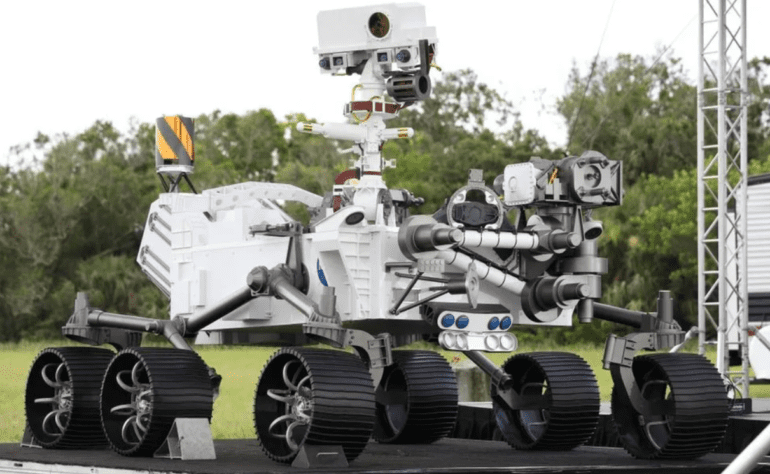TL;DR:
- AI is revolutionizing the search for extraterrestrial intelligence (ETI) by managing vast datasets and spotting anomalies.
- Initiatives like Breakthrough Listen and partnerships between organizations like the Seti Institute and National Radio Astronomy Observatory leverage AI to enhance detection capabilities.
- AI aids in discerning genuine signals from interference, improving efficiency in scanning stars and galaxies for signs of technological civilizations.
- On Mars, NASA’s Perseverance rover, equipped with AI-driven instruments, explores for traces of past microbial life.
- Researchers utilize AI to analyze rock samples for molecular biosignatures, offering a promising avenue for detecting extraterrestrial life.
Main AI News:
Exploring the vast expanse of our galaxy, which harbors between 10 and 50 billion potentially habitable worlds, presents a daunting challenge, according to Bill Diamond, the CEO of the Seti Institute. Seti, short for the Search for Extraterrestrial Intelligence, is dedicated to seeking out evidence of life and intelligence beyond our solar system. Diamond describes this endeavor as akin to searching for a needle in a haystack, with the elusive nature of such phenomena making detection difficult amidst the background noise of the universe.
However, advancements in artificial intelligence (AI) are transforming the search for extraterrestrial intelligence. By leveraging AI’s capacity to manage immense datasets and identify anomalies, researchers are enhancing their ability to detect signs of alien life. One notable initiative involves a collaboration between the Seti Institute and the National Radio Astronomy Observatory in New Mexico. Here, AI-powered software is being developed to analyze radio frequency data collected by the Very Large Array, a network of massive dish antennas.
This AI system will process an astonishing two terabytes of data per second, a volume far exceeding the storage capacity of modern laptops. Diamond emphasizes the indispensable role of AI in this pursuit, particularly in expanding the search to encompass a broader range of radio signals, including wideband transmissions that conventional methods might overlook.
Another significant project, Breakthrough Listen, supported by substantial private funding, aims to survey a million stars and 100 galaxies for signs of technological civilizations. Utilizing AI, researchers are refining their ability to distinguish genuine signals from potential interference, thus enhancing the efficiency and accuracy of their search efforts.
Moreover, AI is not limited to the quest for extraterrestrial intelligence but is also employed in the exploration of more familiar frontiers, such as Mars. NASA’s Perseverance rover, equipped with sophisticated instruments, including the Sherloc spectrometer, is tasked with analyzing Martian rocks for signs of past microbial life. While initial findings suggest the presence of organic compounds, AI-driven analysis holds the potential to discern subtle patterns indicative of biological activity.
Furthermore, researchers at the Carnegie Institution for Science are pioneering AI-based techniques to scrutinize rock samples for molecular biosignatures. By leveraging machine learning algorithms to analyze vast datasets, they have achieved remarkable accuracy in distinguishing between biological and non-biological material, offering a promising avenue for detecting signs of extraterrestrial life.
Conclusion:
The integration of AI into the search for extraterrestrial life marks a significant advancement in scientific exploration. This intersection of technology and space research not only expands our understanding of the universe but also presents opportunities for innovation and collaboration across industries. As AI continues to refine our ability to decipher the cosmos, it underscores the importance of interdisciplinary approaches in addressing complex scientific questions, with potential implications for markets ranging from aerospace to artificial intelligence development.

